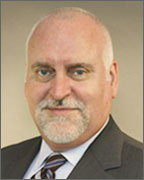![]() The recent Commodities Futures Trading Commission Market Risk Advisor Committee (MRAC) hearing included a panel discussion and central counterparty (CCP), or clearinghouse risk.
The recent Commodities Futures Trading Commission Market Risk Advisor Committee (MRAC) hearing included a panel discussion and central counterparty (CCP), or clearinghouse risk.
This provides an opportunity to flashback in time, to June 27, 2017; on that day, the House Agriculture Committee held a hearing entitled:”Clearing the Next Crisis”.
That hearing, taken along with the most recent MRAC hearing, provides an opportunity for extensively deep dive into the world of CCPs, their impact on the market, and managing their default risk.
It’s first noteworthy that Robert Steigerwald of the Federal Reserve Bank in Chicago, testified at both hearings.
“Since I believe that clearinghouses are uniquely dependent on the immediate availability of liquidity in circumstances where private sector liquidity arrangements may be inadequate, I believe that it is crucial for central banks to be prepared to provide liquidity in such circumstances.” Steigerwald said in the 2017 hearing.
What is a CCP?
“People bring contracts to the clearinghouse and the clearinghouse steps between the buyer and the seller,” explained attorney Jerrold Salzman, speaking on behalf of the CME Group before in the June 2017. “It collects from those who lose and pays to those who win. It manages a matchbook is what we call it.”
Another way to look at it, is that CCPs settle all trades, guaranteeing everyone gets paid.

CCP Default Risk
The hearing in 2017, measured the risk that a CCP could fail and the larger risk that created.
“Failure of a major clearinghouse would be an unprecedent event; such an event would mean there would be a cataclysmic breakdown of the interlocking risk management schemes despite their highly regulated system.” Collin Peterson, a Democrat from the State of Minnesota, said at the June 2017, hearing.
But such an event may have since already occurred.
Marine Rosenberg is the Managing Director and Global Head of Clearinghouse Risk & Strategy, JP Morgan Chase & Co and she testified at the MRAC hearing.
She noted a recent default at a clearinghouse for a European NASDAQ exchange.
A Reuters story from September 2018 explained further.
“Einar Aas, a derivatives trader who made large bets on the power market, left a 114 million euro ($133 million) hole in the clearing house buffers when his funds ran out, drawing scrutiny from regulators seeking to clarify whether rules were broken.
“Energy firms and other players on the 166-member market had been given until the end of Monday to cover the loss or face default themselves.
“’The Member Default Fund now has been recapitalized by 100 percent, or 107 million euros ($125 million),’ Nasdaq (NDAQ.O) said in a statement.”
The Member Default Fund, is a sort of clearinghouse insurance fund which those who use clearing services are required to contribute into.
Rosenberg said part of the problem is that the wrong party is paying into this fund.
“At same time, clearing members bear the consequences- the capital consequences- of losses through the collective default fund contribution they provide to the CCP for loss mutualization. This model creates an imbalance separating the rewards of ownership from its risks.” Rosenberg said.
CCPs and the Exchanges
Lee Betsil, the Chief Risk Officer for the CME Clearinghouse, was another speaker at the MRAC event.
He noted that even as the CFTC and the Congress provide CCP oversight, the CME clearing division also provides oversight of CCPs which clear on their exchanges.
“CME’s Clearing maintains a dedicated in-house dedicated risk committee, which is comprised of market stakeholders: including clearing member, clients, and independent members. In addition to this committee, the CME maintains a clearinghouse oversight committee which is comprised of board members of CME Group.” He said.
The CCPs and SWAPs
Also speaking was Alicia Crighton, the COO, Prime Services US Clearing at Goldman Sachs, though she represented the Futures Industry Association, as the FIA rep on MRAC.
Crighton noted that clearing swaps, which has been in place since the 2008 crisis, has increased clearing activity significantly.
“The increase in volume cleared by CCPs, particularly stemming from the G20 mandate can lead to enhanced financial stability, but also requires that CCPs engage in strong risk management.”
The G20 meeting was in Pittsburgh in 2010 and it laid out the framework where SWAPs would move from over the counter to exchange traded.
SWAPs trading is important because it was swaps, or credit default swaps particularly, which contributed heavily to the 2008 financial crisis.
CDS were supposed to be used by banks to hedge, or offload, credit risk when they’d get too heavy in an asset class like high risk car loans.
It turned into nothing but a casino with few rules in a global market underwriting hundreds of trillions of loans.
To say that the system was out of control is quite an understatement.
The 2010 G20 meeting laid out a new global swaps trading framework- which included CCPs– in response to this excess.
Are Certain CCPs Too Big to Fail
In his opening remarks at the June 2017 hearing, Peterson called the risk of default remote but called such a hypothetical a “crisis”.
Indeed, one takeaway from both hearings is that clearinghouses, at least certain clearinghouses maybe too big to fail, which may be why a Federal Reserve member argued for the Fed giving them a backstop.
Their involvement in SWAPs along with all their other products, means taking on trillions in loan guarantees.
This may be where the debate goes next.









